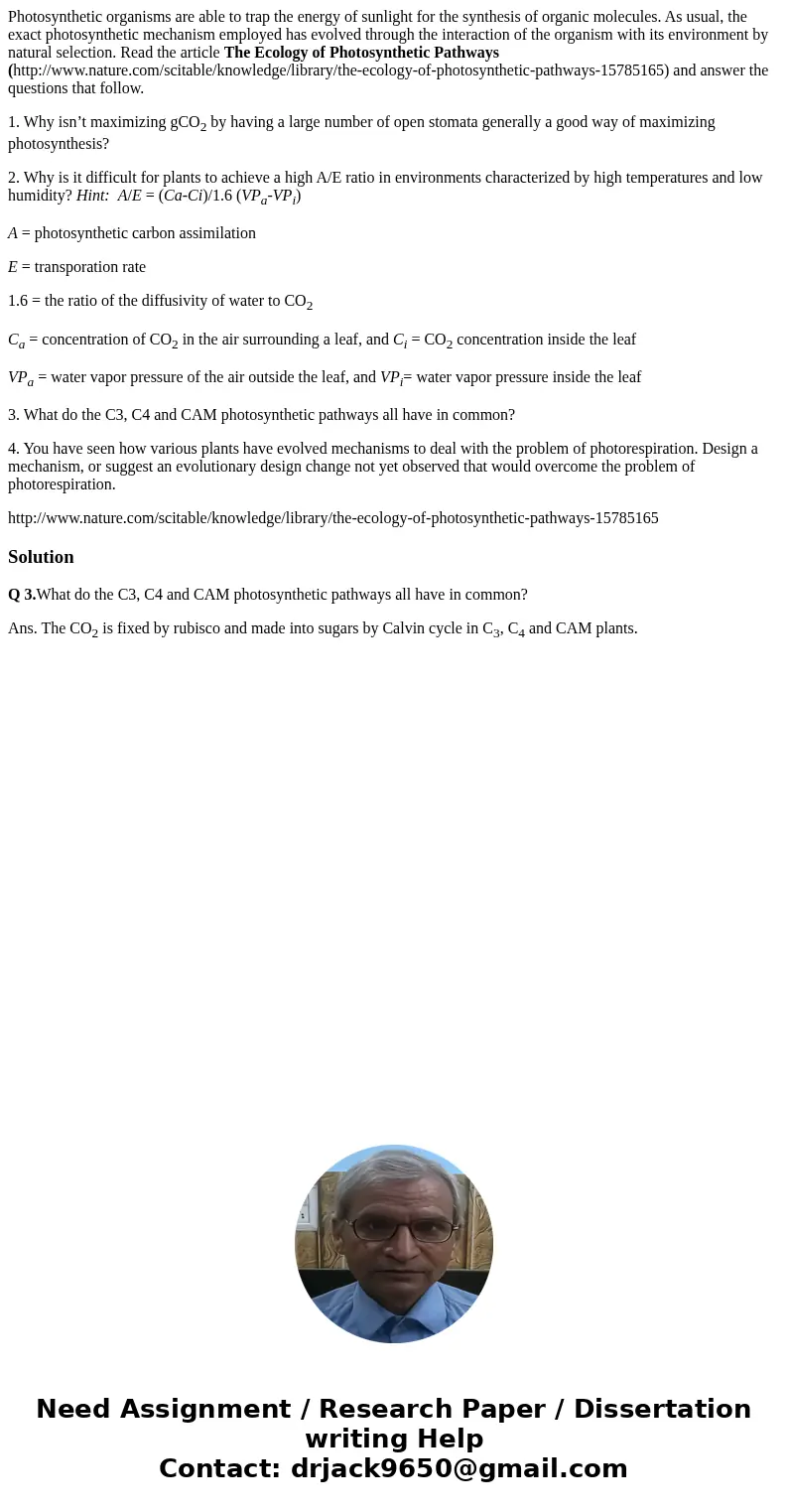Photosynthetic organisms are able to trap the energy of sunl
Photosynthetic organisms are able to trap the energy of sunlight for the synthesis of organic molecules. As usual, the exact photosynthetic mechanism employed has evolved through the interaction of the organism with its environment by natural selection. Read the article The Ecology of Photosynthetic Pathways (http://www.nature.com/scitable/knowledge/library/the-ecology-of-photosynthetic-pathways-15785165) and answer the questions that follow.
1. Why isn’t maximizing gCO2 by having a large number of open stomata generally a good way of maximizing photosynthesis?
2. Why is it difficult for plants to achieve a high A/E ratio in environments characterized by high temperatures and low humidity? Hint: A/E = (Ca-Ci)/1.6 (VPa-VPi)
A = photosynthetic carbon assimilation
E = transporation rate
1.6 = the ratio of the diffusivity of water to CO2
Ca = concentration of CO2 in the air surrounding a leaf, and Ci = CO2 concentration inside the leaf
VPa = water vapor pressure of the air outside the leaf, and VPi= water vapor pressure inside the leaf
3. What do the C3, C4 and CAM photosynthetic pathways all have in common?
4. You have seen how various plants have evolved mechanisms to deal with the problem of photorespiration. Design a mechanism, or suggest an evolutionary design change not yet observed that would overcome the problem of photorespiration.
http://www.nature.com/scitable/knowledge/library/the-ecology-of-photosynthetic-pathways-15785165
Solution
Q 3.What do the C3, C4 and CAM photosynthetic pathways all have in common?
Ans. The CO2 is fixed by rubisco and made into sugars by Calvin cycle in C3, C4 and CAM plants.

 Homework Sourse
Homework Sourse